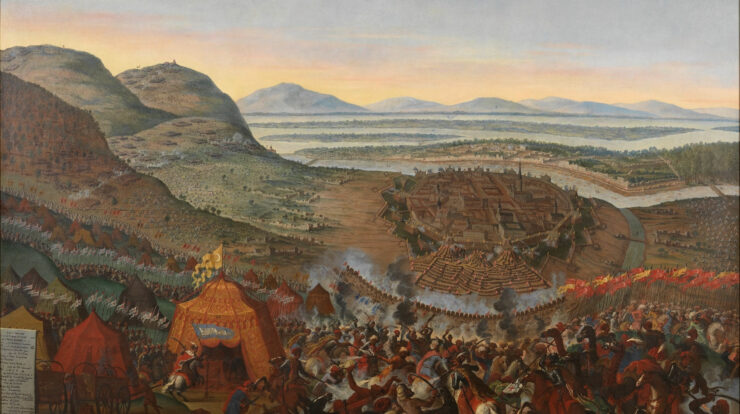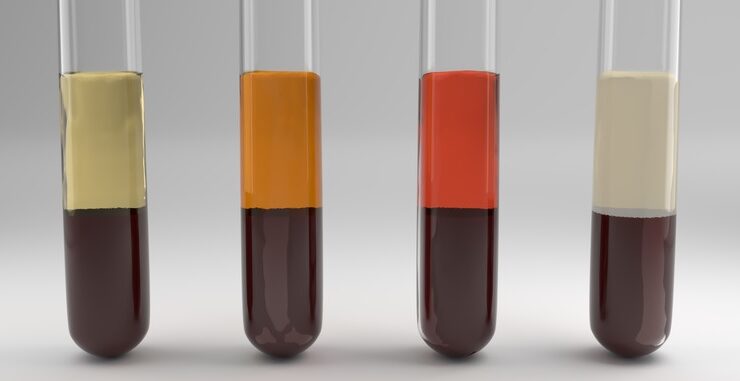
I’m thrilled to help you find out about recent events in Britain in 1683. There doesn’t seem to be a widely known or major declaration directly attributed to Britain in that specific year, according to a thorough investigation of historical records. To give you a deeper understanding of the historical landscape, I can, however, provide context about significant events and changes in Britain at that time. Let us examine the details of 1683 in Britain, concentrating on political, social, and cultural events that could be relevant to your inquiry about a “declaration.”
1. Historical Context of Britain in 1683
In Britain, the year 1683 is in the Restoration period. This is the time after the English Civil War and the founding of the Commonwealth of England by Oliver Cromwell, when King Charles II restored the monarchy. Britain was dealing with significant political unrest, religious differences, and the aftermath of major changes during this time. By 1683, Charles II had been king for more than twenty years. The country faced several problems, including the question of who would succeed to the throne, conflicts between Catholics and Protestants, and conspiracies to overthrow the monarchy.
The year 1683 was marked by several events that changed the course of British history, but no single “declaration” stands out as the most important one. This time led up to the Glorious Revolution of 1688–1689, which changed the monarchy and government in Britain in a big way.
2. Key Events in Britain in 1683
Although there was no specific, well-documented “declaration” in Britain in 1683, several important events and changes took place:
- There was a plot to kill King Charles II and his brother James, Duke of York (later James II). The discovery of the Rye House Plot was one of the most important events of 1683. Because James was an outspoken Catholic, this plot, which was uncovered in June 1683, aimed to stop a Catholic from taking the throne. The public reveal and following trials related to this plot were significant and could be interpreted as a declaration of purpose by the conspirators or a declaration of loyalty by the monarchy in reaction, even though they were not a “declaration” in the traditional sense.
- Repression in politics: After the Rye House Plot, Charles II’s government cracked down on people who didn’t agree with him, especially Whigs who were considered against total monarchy and Catholic influence. Various sources requested declarations of allegiance to the king during this period, despite the absence of a single formal declaration marking the year.
- Changes in the colonies: In 1683, Britain was also growing its colonies. For example, settlers were establishing the Province of Pennsylvania in North America, which William Penn started in 1681. This trend showed that Britain’s global goals were growing. During this period, the Crown issued declarations or gifts that served as the foundation for foreign laws and policies. These were not declarations made in Britain itself.
3. The Rye House Plot: A Significant Incident
Many details about the Rye House Plot connect to the concept of a “declaration” in a broader context. This is because it was the most important event in Britain in 1683. Rye House, a guarded house in Hertfordshire where conspirators reportedly planned to surprise the king and his brother on their way back from the horse races at Newmarket, gave rise to the plot’s name.
- Fears of a Catholic monarchy drove the plot. James, Duke of York, was the likely heir and a known Catholic. Many Protestants, including extreme Whigs and former supporters of the Commonwealth, opposed this potential succession.
- The plot was uncovered on June 1683, which led to arrests and trials. Two important individuals, Lord William Russell and Algernon Sidney, faced accusations and subsequent execution for treason.
- The revelation of the plot led to a wave of government declarations condemning the conspirators and encouraging allegiance to the Crown. In reality, the monarchy’s public comments and court cases were real declarations of its determination to keep power and put down dissent.
There was no official parliamentary or royal declaration of the Rye House Plot, but the public outrage and the political actions that followed could be considered actions by the state to silence criticism.
4. Political and Religious Climate
The bigger picture of 1683 in Britain also explains why there may not be a major “declaration” for this year. Significant declarations and changes occurred in nearby years during the late 17th century, which was a time of shift.
- The Test Act of 1673, which was passed ten years earlier, said that people who wanted to hold public office had to renounce Catholic beliefs. This meant that Catholics could not be in power. Despite not occurring in 1683, the Test Act set the precedent for the religious issues prevalent at the time.
- Exclusion Crisis (1679–1681): Just before 1683, Britain went through the Exclusion Crisis, during which people tried to keep James from the throne because he was Catholic. Even though the crisis was over when Charles II dissolved Parliament in 1681, its effects could be felt in 1683, which led to plots like Rye House.
- Later Declarations: Following 1683, the next major “declaration” in British history was James II’s Declaration of Indulgence in 1687, which aimed to promote religious equality but was met with suspicion. The Glorious Revolution led to the creation of the Bill of Rights in 1689.
In 1683, Britain was in a relatively calmer transitional period. The monarchy was strengthening its power after earlier disasters but before the significant changes of the late 1680s.
5. Summary of Findings
To answer your question directly, there doesn’t seem to be a specific, well-known declaration made in Britain in the year 1683 that stands out in history as a defining proclamation or law. The Rye House Plot’s aftermath, however, led to public comments, trials, and government actions that could be interpreted as declarative in nature, supporting King Charles II’s power and condemning opposition. This marked the year 1683.
If by “declared” you meant a formal royal declaration, parliamentary act, or other official statement, there wasn’t one that stands out that much in 1683 compared to other years. You might be talking about a less well-known local or specific declaration, or there may be a mix-up with a different year or event. If you have more information or details (like those that relate to a specific area, person, or declaration type), I’d be happy to learn more.
6. Key Events Timeline Table
To provide a better picture, the following table summarizes important events and background information for Britain in and around 1683.
| Year | Event | Description |
|---|---|---|
| 1673 | Test Act Declared | Required officeholders to reject Catholic doctrines, shaping religious policy. |
| 1679-1681 | Exclusion Crisis | Attempt to bar James, Duke of York, from succession due to his Catholicism. |
| 1683 | Rye House Plot Uncovered | Conspiracy to assassinate Charles II and James; led to trials and executions. |
| 1687 | Declaration of Indulgence | James II’s attempt to promote religious tolerance, met with suspicion. |
| 1689 | Bill of Rights | Established key constitutional principles post-Glorious Revolution. |
Final Thoughts
The year 1683 was significant because of the Rye House Plot and the continued conflicts between the monarchy, religious forces, and political groups, although no specific declaration was made by Britain. These events indirectly influenced future declarations and changes in British government. If you meant something more specific by “declared,” like a local declaration, a scientific or cultural announcement, or a different year, please provide more details, and I’ll be delighted to help.


